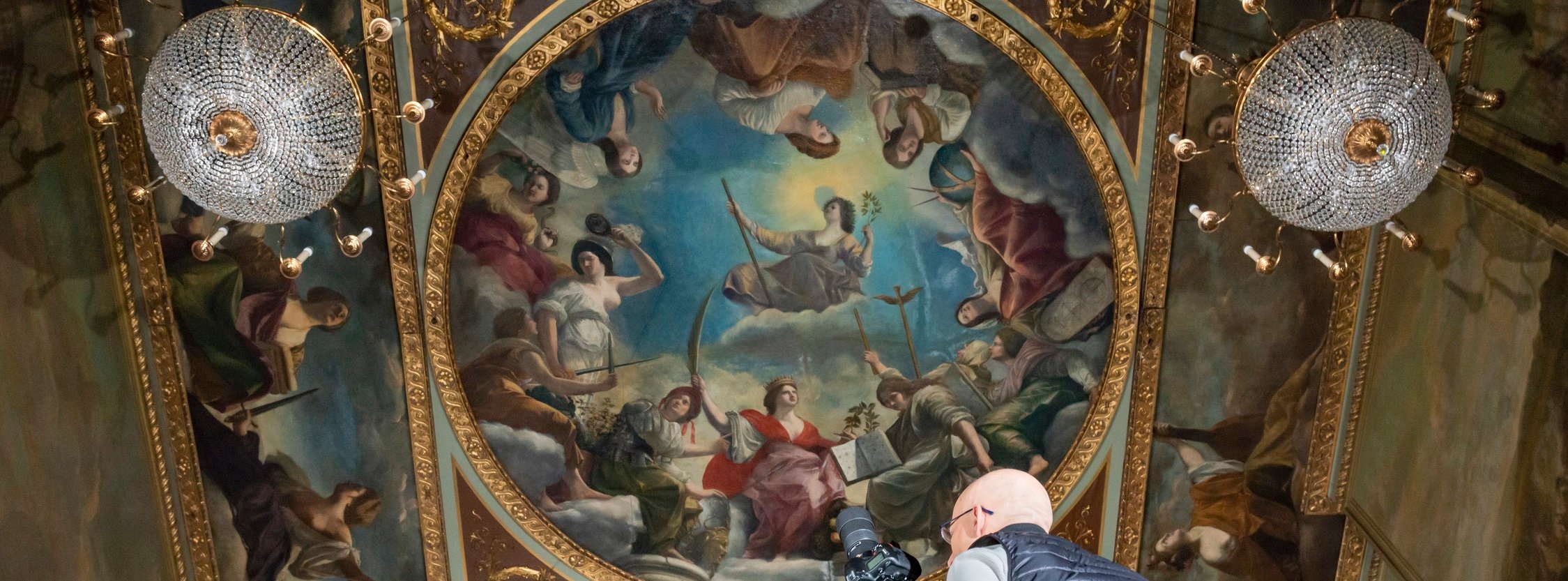
The Marlborough House ceiling by Orazio and Artemisia Gentileschi
Learn about the history of this magnificent ceiling
The Muses: Erato and Terpschore
c. 1635-8162.5 x 566.4 cm (sight) (sight) | RCIN 408471
This is one of four rectangular panels depicting two of the nine Muses, which is part of the ceiling decoration of An Allegory of Peace and the Arts. Painted by Orazio Gentileschi, for Queen Henrietta Maria, c.1636-8, the ceiling decorated the Great Hall at the Queen's House Greenwich until about 1711, when Queen Anne granted it to her favourite, Sarah, Duchess of Marlborough, and it was transferred to her new residence Marlborough House on Pall Mall, now the Commonwealth Secretariat.
The ceiling celebrates the benign rule of Charles I when peace and the liberal arts could flourish. The four panels of the Nine Muses, together with four panels with Personifications of the Arts frame the central tondo (RCIN 408464). Each Muse had a sphere of influence over learning and the arts. With the exception of Polyhymnia and Terpsichore, Gentileschi has followed Cesare Ripa’s Iconologia, the popular hand book for allegorical personifications.
Two seated Muses are resting on clouds: on the left Erato, Muse of lyric and love poetry, in a gold robe and crowned with pink roses, holds up an orpharion. On the right Terpsichore, Muse of choral dance and song, wearing red and mauve, holds a large shawm in her right hand.
It is now thought that Artemisia, Orazio’s daughter, may have assisted her father with his last commission. She probably arrived in London early in 1638, and if the ceiling was installed at the end of that year, she could have had time to paint some of muses and personifications of the arts in the outer canvases. These figures often have the dramatic chiaroscuro and more powerful physiques of Artemisia’s work compared to the refined and artificial style of her father.







